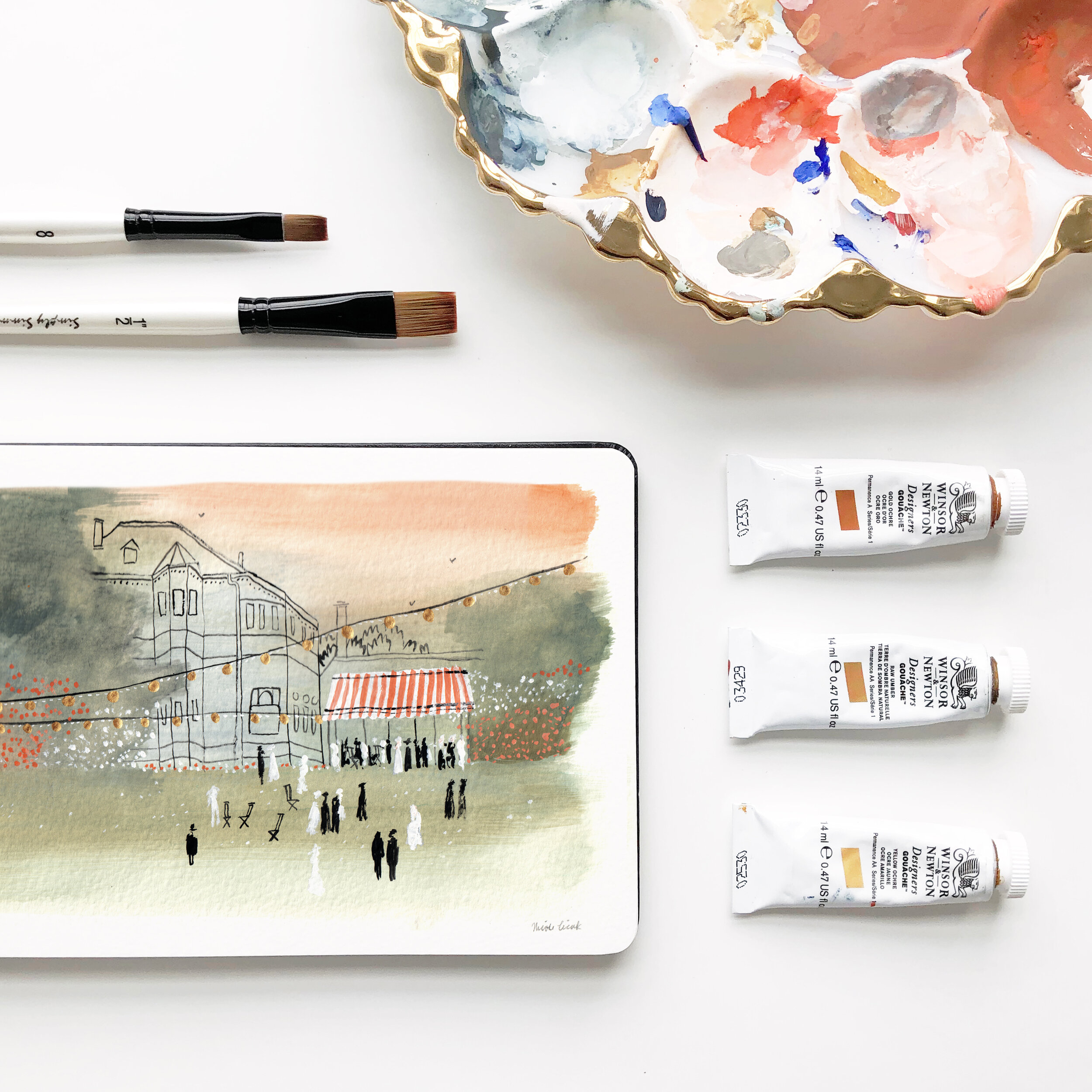A Beginners Guide to Gouache
As many of you know, I use gouache to create all of my illustrations. Sometimes I overlay pens and colored pencils, but gouache is always my base. A few years ago, I used colored pencils for all of my work. Switching to gouache has taken my work to the next level. I can’t say enough good things about it!
While gouache is awesome, it can be tricky if you are new to it. In this post, I want to provide an overview of the medium, as well as some beginner’s tips and tricks for using it.
I’m often asked what the difference between gouache and watercolor is. They are in the same family because you mix both with water. The difference between the two is that gouache is opaque (meaning you can’t see through it when you apply it to paper), watercolor is not. With watercolor, you’re adding water to get lighter colors. With gouache, you’re adding white. Because of this, gouache tends to be thicker than watercolor. I find the thickness makes it easier to control, but that’s just my preference. I also like that with gouache, you can simply paint over something if you don’t like it.
When comparing gouache to other types of paint, it dries very quickly - typically in a few minutes or less. You can add water to dried up gouache, and it becomes paint again. The application of gouache is very clean because you won’t have pencil shavings or smears on your work. All of these positives make gouache incredibly versatile. You can crank out illustrations very quickly, without being hindered by a finicky medium.
Here are some tips for using gouache:
Always apply the paint by squeezing it onto a palette, and then adding a water with a brush. Never stick your brush directly into the paint tube. It will discolor the paint permanently. Also, you never want to use the paint without adding at least a little water. It’s much too thick to use on its own, and will probably crack once it dries on your paper.
Only use watercolor or mixed media paper. I like this one. If you use regular paper, it will wrinkle once the paint is applied.
Lightly sketch your composition in pencil first, and then paint over it. Because gouache is opaque, you won’t see your pencil strokes as long as they are light.
Use synthetic brushes. I think these work best. I recommend trying a variety of shapes and sizes to see what you like.
Keep your work away from water or spilled drinks! It will run like nobody’s business!! I found this out the hard way. I even store my paintings in plastic sleeves when I’m finished with them, just to take precautionary measures.
My favorite brand of gouache is Winsor & Newton, but I know artists who use different brands. I recommend buying the individual tubes of paint, versus the box sets. When I’ve bought paint sets in the past, I’ve ended up with a lot of colors I don’t need. For beginners, I would recommend purchasing the following - ivory black, permanent white, ultramarine, yellow ochre, and cadmium scarlett. You can make most colors with those five shades.











Thanks for stopping by! I’m an illustrator & writer. I’ve been running my own creative business since 2015. My mission is to help artists find their unique creative voice, build positive habits, and do what they love for a living.